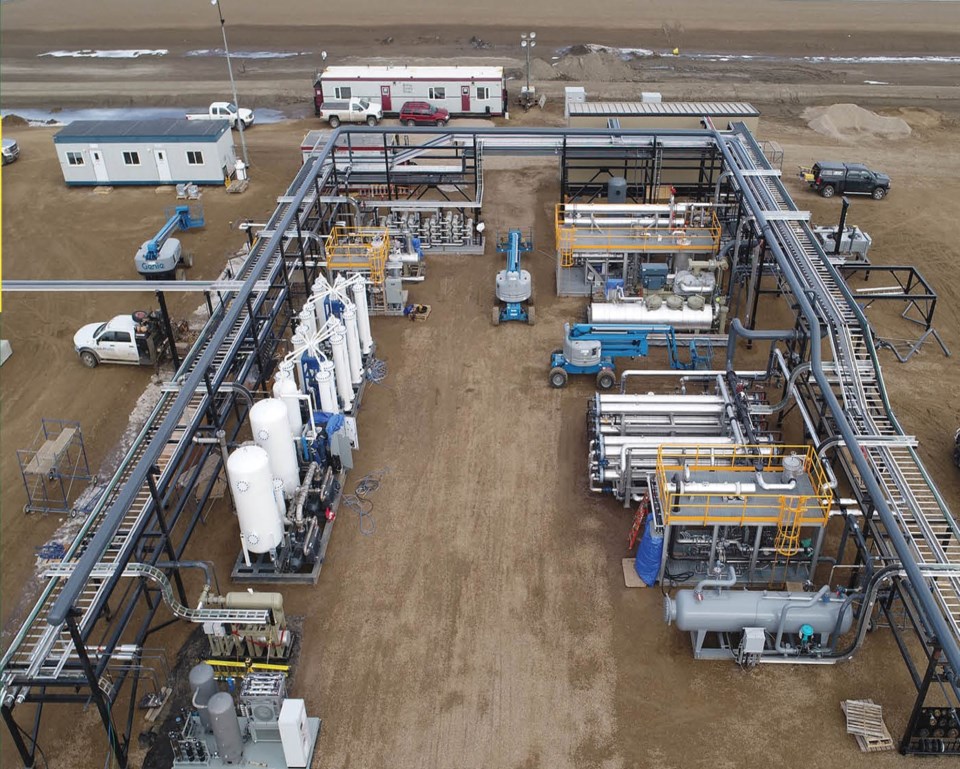The Saskatchewan government launched a Helium Action Plan in November of last year and followed up recently with the announcement of a $140,000 grant to the Saskatchewan Research Council (SRC) for a helium liquefaction hub study.
The province’s Helium Action Plan (HAP) sets a goal of supplying 10 per cent of the world’s helium by 2030. That would be huge, because the current supply is controlled by just a few countries: the US is number one, with Algeria and Qatar close behind.
Canada has the fifth-largest helium reserves in the world.
The element is becoming increasingly important in a variety of high-tech applications, thanks to its interesting behaviour at low temperatures.
The provincial government estimates that if its HAP succeeds, significant economic benefits will follow, including:
- More than 500 permanent new jobs
- Thousands of construction and service sector jobs
- Production from over 150 new dedicated helium wells
- Up to 15 purification and liquefaction facilities
- Annual exports worth more than $500 million
What is helium and how is it produced?
Helium is the second-most abundant element in the universe, just after hydrogen. That makes sense given their simplicity – hydrogen has an atomic weight of one, meaning it has just one proton, and helium is close behind with an atomic weight of two.
Unfortunately, helium is relatively rare on Earth. It doesn’t react with other gases and is extremely light, which is part of its usefulness. However, that also means there isn’t much to hold it in our atmosphere; once released into the air, it just drifts off into space.
Helium is non-renewable and cannot be manufactured. Or rather, it is not produced quickly enough to be useful. Helium is a result of radioactive decay that takes thousands upon thousands of years.
Most helium is extracted from natural gas deposits. Once extracted, it can be separated through a process called fractional distillation.
Helium has the lowest boiling and melting point of any element. That means the other gases it is mixed in with will liquefy before it does. Natural gas is placed under high pressure and the temperature is lowered in stages to remove gases such as nitrogen and methane. What’s left is passed through activated charcoal, resulting in close-to-pure helium.
In April 2021, North American Helium (NAH) completed a $32 million helium purification facility near Battle Creek – Canada’s largest such facility. It is expected to produce more than 50 million cubic feet of purified helium per year.
However, purified helium is still a gas. Liquid helium is far more valuable and much easier to transport and export. Canada currently sends its purified helium to the US to be liquefied, which is why the SRC is now studying the viability of building liquefaction hubs in the province.
Uses for helium
The most important use of helium today is in cryogenic (supercool) applications. Materials behave differently at supercool temperatures – some materials become superconductors, meaning they don’t have any electrical resistance. Superconductors can create powerful magnetic fields.
Machines that use superconducting magnets need extremely low temperatures to function.
Magnetic resonance imaging (MRI) scanners need liquid helium. MRI and similar scanners are incredibly useful in medical applications and for studying molecular physics.
Because helium is non-reactive (inert), it is also used as a protective barrier in growing certain kinds of silicon (used in every electronic device) and in high-temperature welding applications that would be weakened by exposure to oxygen or nitrogen.
With demand rising and reserves in other parts of the world depleting, helium could become a major part of Saskatchewan’s economy.




